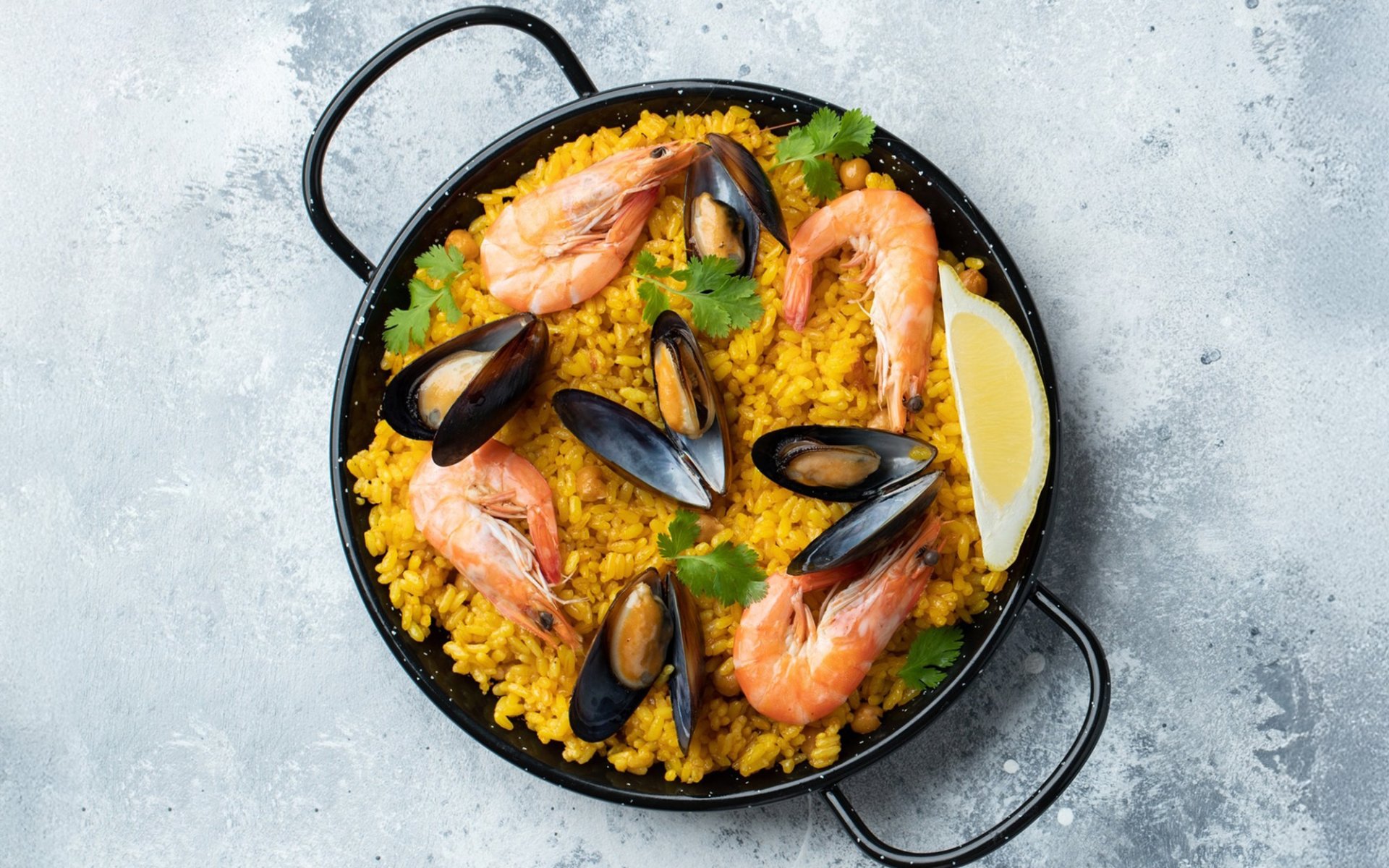Paella

When it comes to Paella, many Thais often refer to it as "Spanish fried rice." But did you know that Paella isn't actually fried rice? Its cooking method is more akin to baked rice. Perhaps it's the appearance and vibrant colors of Paella that resemble our local fried rice, leading many to call this popular dish "Spanish fried rice."
Origin in Valencia: Simple Meal of the Working Class
Paella is the national dish of Spain, originating from the region of Valencia. This area is one of the largest port cities in the Mediterranean Sea and a top rice-producing region in Spain, making rice a staple food for its people.
Originally, Paella was a simple lunch for the working class, such as farmers and laborers. It was made from local ingredients readily available in the countryside. Farmers in the area would bring rice from their fields to cook and share. Various vegetables like tomatoes, onions, peppers, and garlic were cooked with meats they could find, such as wild rabbit, chicken, duck, snails, and pork. These ingredients were combined in a flat, round pan with two handles and cooked over an open fire until done. It was a simple dish that didn't take long to prepare, truly reflecting the straightforward customs and traditions of the Valencia region.
From Farmer's Pan to Diverse Regional Dishes
Paella is a word in the Valencian dialect meaning pan, broadly referring to all types of pans used in cooking. Thus, this dish was named after the utensil used for its preparation. Over time, Paella gained more fame and spread to various regions across Spain. Each area adapted the recipe to have its own unique characteristics. For instance, in the landlocked regions of Castile and León, the ingredients primarily consisted of pork, chicken, or other easily accessible local ingredients. Conversely, in coastal Galicia, ingredients like shrimp, shellfish, fish, and octopus were commonly used.
Seafood Paella gained widespread recognition as a delicacy, becoming a symbol of Spanish coastal cuisine. Eventually, it wasn't just farmers who enjoyed Paella; people of all social classes in Spain also began to appreciate this hot dish. As its popularity spread throughout the country, wealthier individuals started to incorporate saffron into the dish, making it even more valuable and appetizing. Ultimately, it became the national dish of Spain from then on.
Paella: A Global Icon and the Heart of Sharing
As time passed, Paella's popularity transcended national borders and garnered international acclaim. The history of Paella proves that despite its humble beginnings as a farmer's meal, the cultural heritage and culinary creativity of those individuals brought renown to their country. Today, Paella is a globally recognized dish.
The method of making Paella begins by heating a pan with oil, then sautéing meats or other ingredients until cooked. These are then set aside. Next, raw rice (traditional recipes use short-grain Spanish rice varieties like Arroz Redonda, Senia, Bomba, Bahfa, and Thaibonnet) is added to the pan, followed by pouring in stock or broth. The previously cooked meats are then added back to the pan, and the mixture is left to simmer over low heat until the rice is thoroughly cooked. As seen, this method involves no actual frying, but rather resembles cooking rice with broth and meat in a pan.
Another distinct feature of Paella is that it is served directly in the cooking pan. Each person has their own spoon, and they share the meal directly from the pan. This communal eating tradition dates back to the farmers of Valencia. Beyond its unique deliciousness, this dish truly fosters a sense of warmth and shared participation among people.


